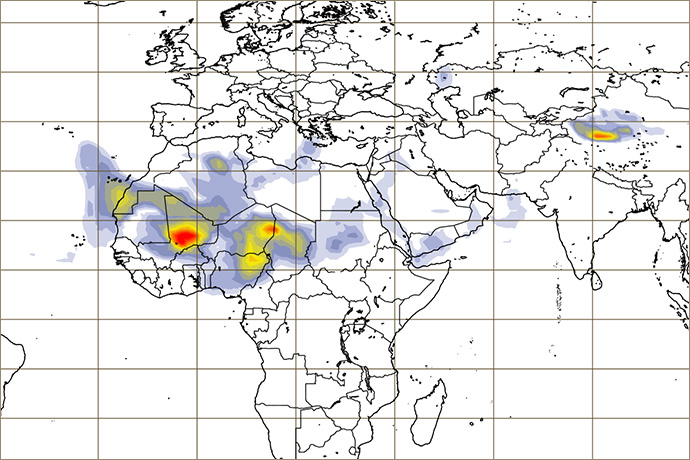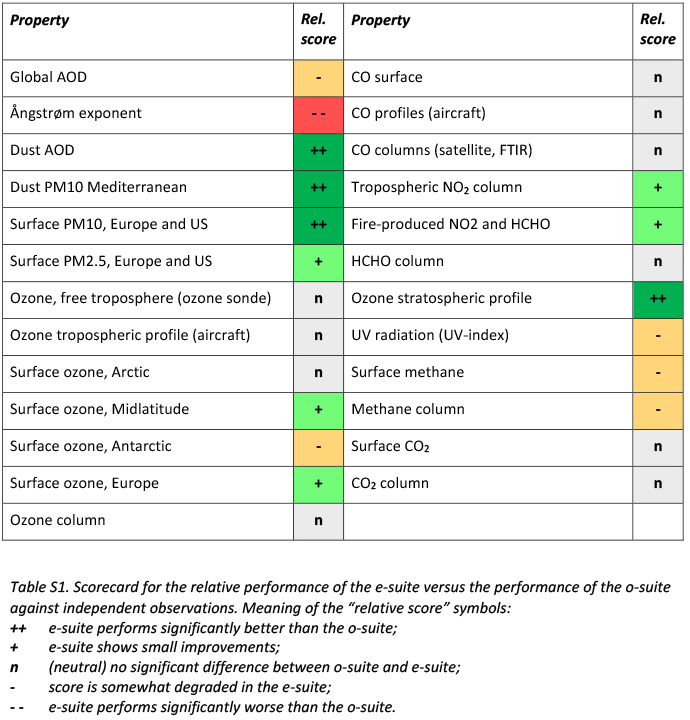

Example from dust aerosol optical depth at 550 nm forecast provided by CAMS.
The global forecasting system of the Copernicus Atmosphere Monitoring Service (CAMS) was successfully upgraded on 6 October 2020, leading to improved forecasts of sea salt and dust aerosol, particulate matter and stratospheric ozone. CAMS is implemented by ECMWF on behalf of the European Commission, and the new operational system uses the latest version of ECMWF’s Integrated Forecasting System (IFS Cycle 47r1).
The Copernicus Atmosphere Monitoring Service provides daily analyses and forecasts of reactive trace gases, greenhouse gases and aerosol concentrations across the globe, among several other services. The free and open data support policymakers, business, scientists and citizens with enhanced atmospheric environmental information.
The forecasting system upgrade combines four significant scientific changes:
- The anthropogenic emissions have been updated to a newer version. In addition, the diurnal cycle and vertical injection height of the emissions for some pollutants, such as SO2, have been refined.
- The parametrizations that model the emission of sea salt and desert dust have been updated, resulting in better agreement with measured sea salt aerosol concentrations and reducing an overestimation of dust in the Sahara, the Middle East and other regions.
- The modelling of stratospheric ozone has been updated with an improved hybrid linear ozone scheme, which improves the vertical profile of stratospheric ozone in the forecasts.
- The assimilation of volcanic SO2 observations from the Sentinel-5p/TROPOMI instrument has been activated.
The improved global forecasting system ran in test mode for the period since October 2019 before it was made operational on 6 October 2020. The CAMS validation team, led by the Dutch Weather Service (KNMI), carefully assessed the outputs to ensure the quality of the daily analyses and forecasts. Their report was published late September and formed the basis for the final decision to go ahead with the implementation of this improved version for the benefit of all users.
The main findings of the extensive report are summarized in the table below, which identifies aspects of the forecast where there is an improvement, aspects that remain the same, and aspects that show some degradation. The assessment was made for the period October 2019 to May 2020 and uses independent observations as a reference. Only variables for which sufficient independent observations were available are shown, and the assessment is based on statistical measures, such as systematic error, random error, and correlation. The routine comparison of the CAMS global forecasts with independent observations can be found on the Global Evaluation Server.

Assessment of the performance of the new upgrade (e-suite) versus the previous forecasting system (o-suite). The “scorecard” shows for which aspects there is an improvement, which aspects remain the same, and which aspects show some degradation. The assessment was made for the period October 2019 to May 2020 and uses independent observations as a reference.
CAMS forecasts can be accessed directly through the ECMWF data server or through operationally supported FTP access. For any questions, please contact the Copernicus User Support team.
